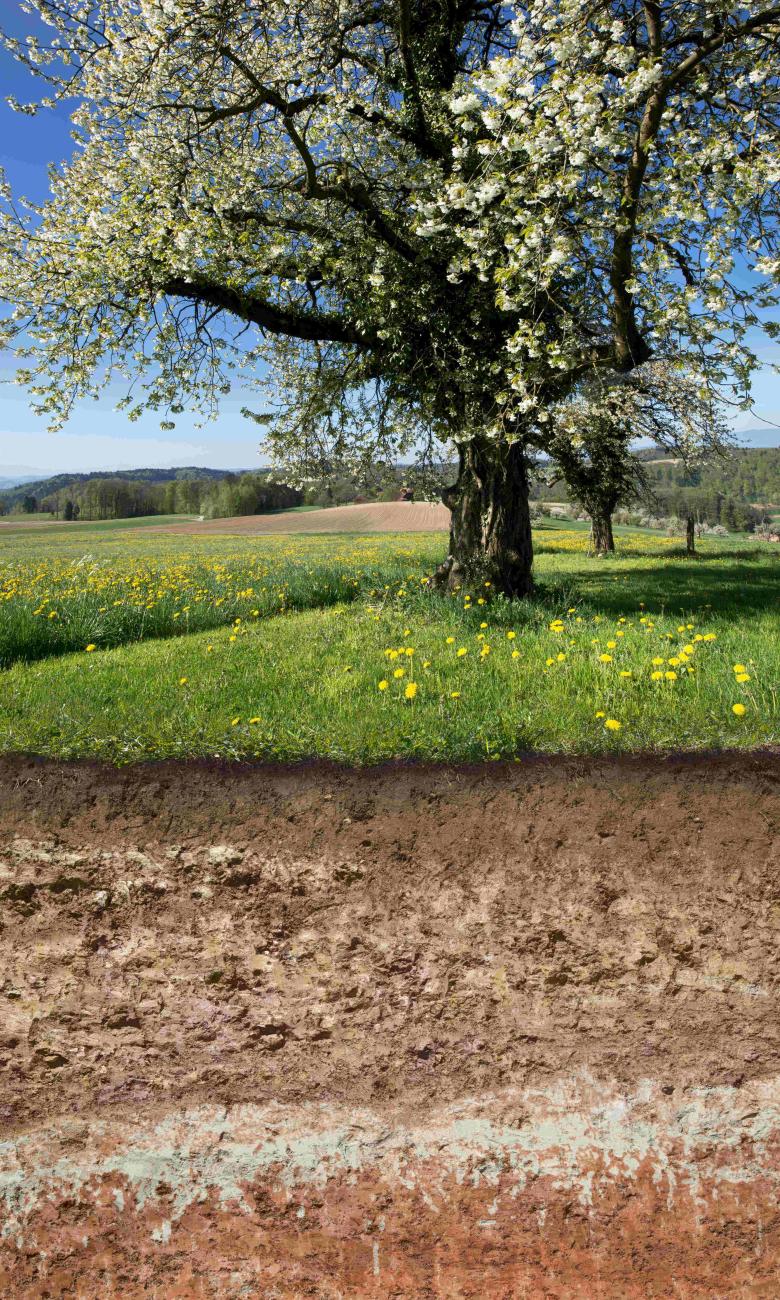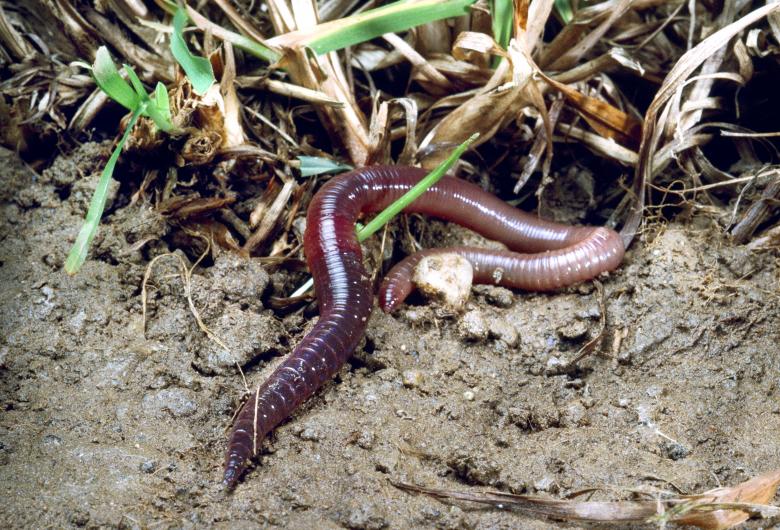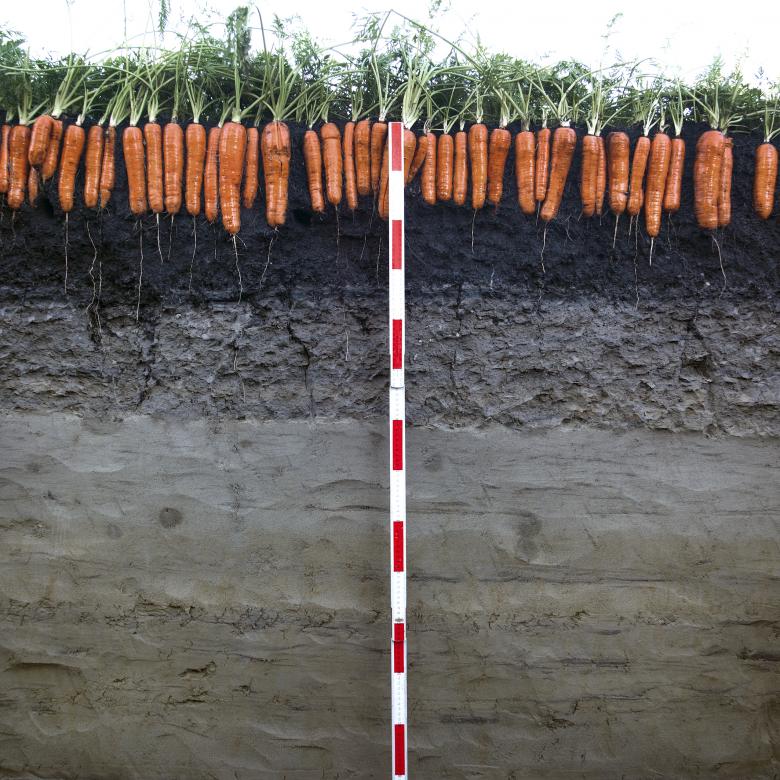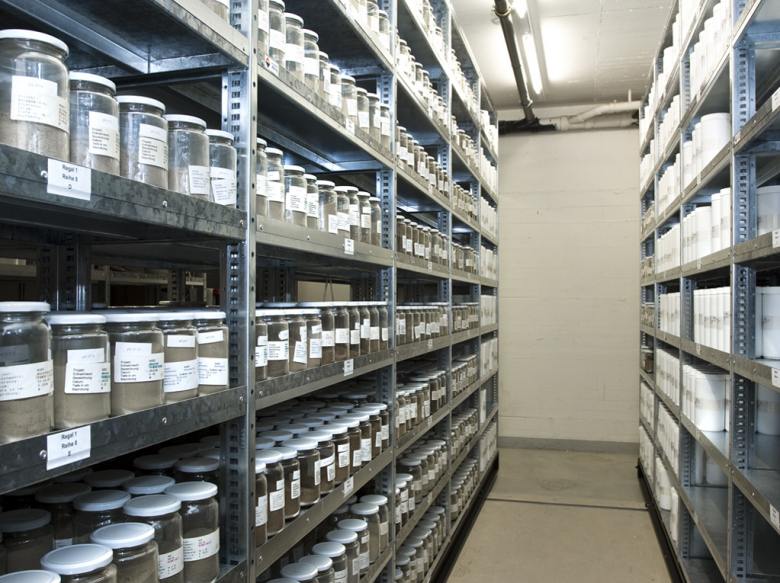Swiss Soils: A Treasure to Protect
Seemingly motionless yet very much alive, essential for the ecosystem yet fragile: as a natural resource of great ecological value, Swiss soils are at the very heart of the concerns of Agroscope and the Swiss Soil Monitoring Network (abbreviated as NABO).
Soil-dwelling creatures, bacteria and fungi: there’s a whole world living below our feet. Swiss soils represent an essential resource for agriculture and the ecosystem, but depend on a delicate balance between the mineral matter, air, water and living creatures that compose them. For the past 30 years, NABO has been evaluating the quality of our soils, in order better to protect this natural treasure.

Living Soils
Is it possible to hear the grass grow? Yes, thanks to ‘Sounding Soil’, an artistic-scientific project in which Agroscope is taking part. Open to the public, the ‘Sounding Soil’ installation consists of a shipping container equipped with a sound system: In seconds visitors find themselves underground, surrounded by animal noises and the screeching of roots. Using a touchscreen, visitors choose audio recordings of soils from the four corners of Switzerland. These soundtracks reveal very different noises depending on the environment in which they were recorded – a conventional wheat field, a conifer forest, or an organic meadow.

© Agroscope, Gabriela Brändle
The soil ‘speaks’ because it is alive. Mites, springtails and earthworms are unceasingly active beneath our feet. These soil creatures produce sounds as they eat, move about and communicate with other members of their species by means of vibrations. Their diversity attests to the good health of the soil, as does the presence of a wide variety of bacterial, fungal and plant species. By giving a voice to the soil, the ‘Sounding Soil’ initiative reminds us that the earth on which we walk is very much alive, and that it is all the more essential that we take care of it.
Essential but Fragile
Ninety percent of our food comes from the earth, and around one-third of Swiss soils are used to produce agricultural commodities.

In order to preserve the fertility of this resource which is vital for our continued existence, it must be used in a sustainable manner. Since 1985, therefore, the NABO team has been studying and documenting the changing quality of our soils over the years. In total, 111 sites across Switzerland are regularly surveyed, including forests as well as arable cropland and meadows. After it is analysed, each soil sample is dried, sieved and archived in the NABO Library in Reckenholz (canton of Zurich).

“This collection encapsulates the memory of our country’s soils”, explains Reto Giulio Meuli, Head of NABO. Such archives are rare in Europe and extremely precious, since they give Agroscope researchers the opportunity to go back in time to analyse the biological, chemical and physical composition of our soils. Currently, NABO’s focus is on examining certain pollutants and nutrients as well as the carbon contained in the soil. In future, the monitoring of pesticide residues in the soil should provide us with new information on these as-yet understudied substances.

A Secret World
The soil is composed not only of mineral matter, but also of air, water and living organisms. It is the balance between these different elements that allows the soil to absorb rainwater, produce food and regenerate. By comparing samples according to their density, the NABO team is able to identify any plots affected by soil compaction – a phenomenon due inter alia to the mechanical ploughing of farmland. Based on these data, measures can be adopted to better preserve the complex, fragile structure of soils.
The earth giant asleep beneath our feet would be nothing without the multitude of organisms invisible to the naked eye that it harbours. As small as they are, these soil-dwelling microorganisms nevertheless play a key role in the ecosystem: they accumulate and convert biomass into nutrients that are essential for plant growth, hold in check the pathogens that are present in the soil, and purify groundwater. Bacteria and fungi are detected and quantified using fragments of DNA sampled from the soil and analysed in Agroscope’s laboratories. Thanks to this information combined with other indicators (climate; chemical and physical composition of the soil; cropping system), NABO researchers can retrace the growth of the communities of microorganisms specific to each site, shedding light on some of the mysteries of life underground.




